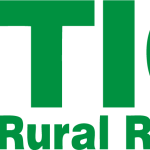
ALFALFA SOIL TEST: pH AND POTASSIUM – Megan Taylor
So you pulled some soil cores and now you have the results in your hand, now what? On your soil test results you will want to check out pH, potassium, and phosphorous levels across all soil textures. If you have a lighter textured soil, check for sulfur levels as well. Today we will focus on pH and potassium recommendations.
For pH, you will want to see a soil test result of 6.2 to 7.0. This range allows alfalfa to have high nodulation and is a range that many of the essential nutrients are readily available. With established alfalfa, adjusting pH is challenging and surface application of lime can affect the upper 2 to 3 inches of the soil profile. However, a pH issue in an established stand can cause decreased nodulation and may be a sign to renovate. Bottom line in alfalfa: it is best to be correct the pH issue at least 4 to 6 months before establishment. Correcting pH in established fields is very difficult and may be a signal to renovate.
Potassium is measured in parts per million or ppm on your soil test sheet. If your test ranges from 126 to greater than or equal to 150, then you do not need to apply potash. If your test ranges from 0-40 (apply 120 lbs. potash/acre), 41-74 (apply 80 lbs. potash/acre), and 75-125 (apply 40 lbs. potash/acre). Potash can be applied in the fall following the last cutting and is recommended yearly for irrigated and in 2 year cycles for dryland.
Remember if you are still wanting to pull soil cores, you will want to sample at 8 inches or historic depth. Collect samples by grid, soil type, or representative area (40 acres or less). Then pull 10 to 15 random soil cores and combine in a plastic bucket. Take about a pint of soil and submit to an accredited lab. If you have questions please contact your local extension educator or agronomist.
GRAZING UNDER SNOW AND ICE – Ben Beckman
For producers hoping to winter animals on crop residues or pasture, too much snow and ice can be an issue. How can winter weather impact your herd management this year?
Just how much snow or ice can be a problem for animals grazing is debatable. This back and forth can mostly be attributed to the differences in the forage itself and precipitation we receive. A foot of stockpiled grass or a hay swath with lots of air under ice or snow is going to be easier to break into and get meaningful forage from than a shortly grazed pasture or corn residue lying on the ground.
When it comes to precipitation, what we actually receive can impact availability as well. A heavy, wet snow will be harder to dig through than dry, fluff. If the snow drifts or sits around for a while and compresses, or melts and forms a crust, digging through becomes harder. With each impediment, an animal has to work harder and harder for a bite. Thickness and length of time maintained are the critical factors for ice. An inch of ice that melts in a day or two after warm temperatures can have less of an impact and ½ inch that sticks around for 3 or 4 days.
So what is the level we need to watch for? I personally like the 6 and ¼ inch rule. 6 inches of snow or ¼ inch of ice, and animals are going to work harder to eat. At this point we need to start watching animal condition, and be ready to supplement, especially if temperatures drop. Again, this is just a starting point. Each situation will be different.
Winter grazing can be a viable practice, but knowing how to handle snow and ice is critical for success. Taller and fluffy forages will be easier for animals to reach under snow and ice. With more than 6 inches of snow or ¼ inch of ice, keep an eye on animals and if body condition starts to drop, be ready with supplemental feed. With practice and planning, winter doesn’t have to stop your herd from grazing.
You can subscribe to the weekly Pasture and Forage Minute at: https://gmail.us17.list-manage.com/subscribe?u=5c438ee4998f5db5645a35e0e&id=c2f262f559


